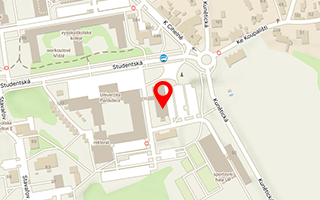We would like to ask any participant who plans to publish the paper to send us an extended abstract of maximum 1700 words by August 15, 2022.
Conference proceeding will be published in the Collective Volume. Please send us a final form of your paper of 8500-10000 words by January 30, 2023.
Instructions for the Authors
Preparing your article:
-
Your article has to be altogether between 8,500–10,000 words .
-
Use British spelling (unless you are quoting from a primary source or text which uses American spelling).
-
All quotations should be translated into UK English (originals can be put into the footnote).
-
Spell out nineteenth century, twentieth century, etc.
-
Numbers under 100 should be spelled out (eleven, ninety-nine, etc.).
-
Dates should be in the format 31st August, 1625.
- Articles should be submitted in Times New Roman, font size 12. Footnote text should be size 10, also Times New Roman.
-
Please use footnotes (not endnotes).
-
Make punctuation consistent. Use a single (not a double) space after a full point, and after commas, colons, semicolons, etc. Use single “English style” quotation marks.
-
Please keep capitalisation to a minimum: north, south, etc. are only capitalised if used as part of a recognised place name e.g. Western Australia, South Africa; use lower case for general terms e.g. western France, south-west of Berlin.
-
Use full stops after abbreviations (p.m., e.g., i.e., etc.) and contractions where the end of the word is cut (p., ed., ch.). Omit full points in acronyms (UK, HMSO, USA, BBC, NATO, plc), after contractions which end in the last letter of the word (Dr, Mr, St, edn, eds, Ltd) and after metric units (cm, m, km, kg,). Note especially ed. eds; vol. vols; no. nos; ch. chs, etc.
Abstract with keywords:
Word limit for your abstract is approximately 100–200 words. In this short paragraph, you should create a selling pitch, focusing on what your chapter is about, what methods have been used, and what you found out. Ensure that the abstract is selfcontained, without abbreviations, footnotes, or incomplete references. It needs to make sense on its own. You should consider which keywords a researcher would most likely search by, placing the most important words as close to the start of the Abstract as possible. Major search engines will crawl the Abstract and return results based not only on which words are used but the order in which they appear. When creating the Abstract, write naturally. Search engines are increasingly sophisticated, and simply including a string of context-free keywords may also alienate those researchers who discover your article.
Permissions:
Authors are responsible for obtaining permission from copyright owners for the use of all tables, figures, and illustrations. If permission fees are charged, it is your responsibility as the author to pay the costs. Any illustrations (including tables and figures) need to be supplied in a separate file and should be of high quality (the best is TIF format, 300 dpi or more).
References:
- Use Chicago/Turabian style.
- For references to archival material: Include the name of the archive, name of the particular collection and unit.

